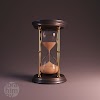Venn Diagrams
Most of the relationships between sets can be represented by means of diagrams which are known as Venn diagrams. Venn diagrams are named after the English logician, John Venn (1834-1883). These diagrams consist of rectangles and closed curves usually circles. The universal set is represented usually by a rectangle and its subsets by circles
being taken only once. The symbol ‘∪’ is used to denote the union. Symbolically, we
write A ∪ B and usually read as ‘A union B
In the above diagram, A and B are disjoint sets
Example -
If X and Y are two sets such that X ∪ Y has 50 elements, X has 28 elements and Y has 32 elements, how many elements does X ∩ Y have ?
Solution Given that n(X∪Y)=50,n(X)=28, n(Y)=32,
n (X ∩ Y) = ?
By using the formula
n(X∪Y) = n(X)+n(Y)–n(X∩Y), we find that
n(X∩Y) = n(X)+n(Y)–n(X∪Y) = 28 + 32 – 50 = 10
Fig1.2
Union of sets Let A and B be any two sets. The union of A and B is the set
which consists of all the elements of A and all the elements of B, the common elementsbeing taken only once. The symbol ‘∪’ is used to denote the union. Symbolically, we
write A ∪ B and usually read as ‘A union B
Exmaples
How to find union
Intersection of sets
————————. ———————— ——————
If A and B are two sets such that A Ç B = f, then A and B are called disjoint sets.For example, let A = { 2, 4, 6, 8 } and
B = { 1, 3, 5, 7 }. Then A and B are disjoint sets,because there are no elements which are common to A and B. The disjoint sets can be represented by means of Venn diagram as shown in the Fig 1.6
In the above diagram, A and B are disjoint sets
Example -
If X and Y are two sets such that X ∪ Y has 50 elements, X has 28 elements and Y has 32 elements, how many elements does X ∩ Y have ?
Solution Given that n(X∪Y)=50,n(X)=28, n(Y)=32,
n (X ∩ Y) = ?
By using the formula
n(X∪Y) = n(X)+n(Y)–n(X∩Y), we find that
n(X∩Y) = n(X)+n(Y)–n(X∪Y) = 28 + 32 – 50 = 10
Difference between two sets















0 Comments